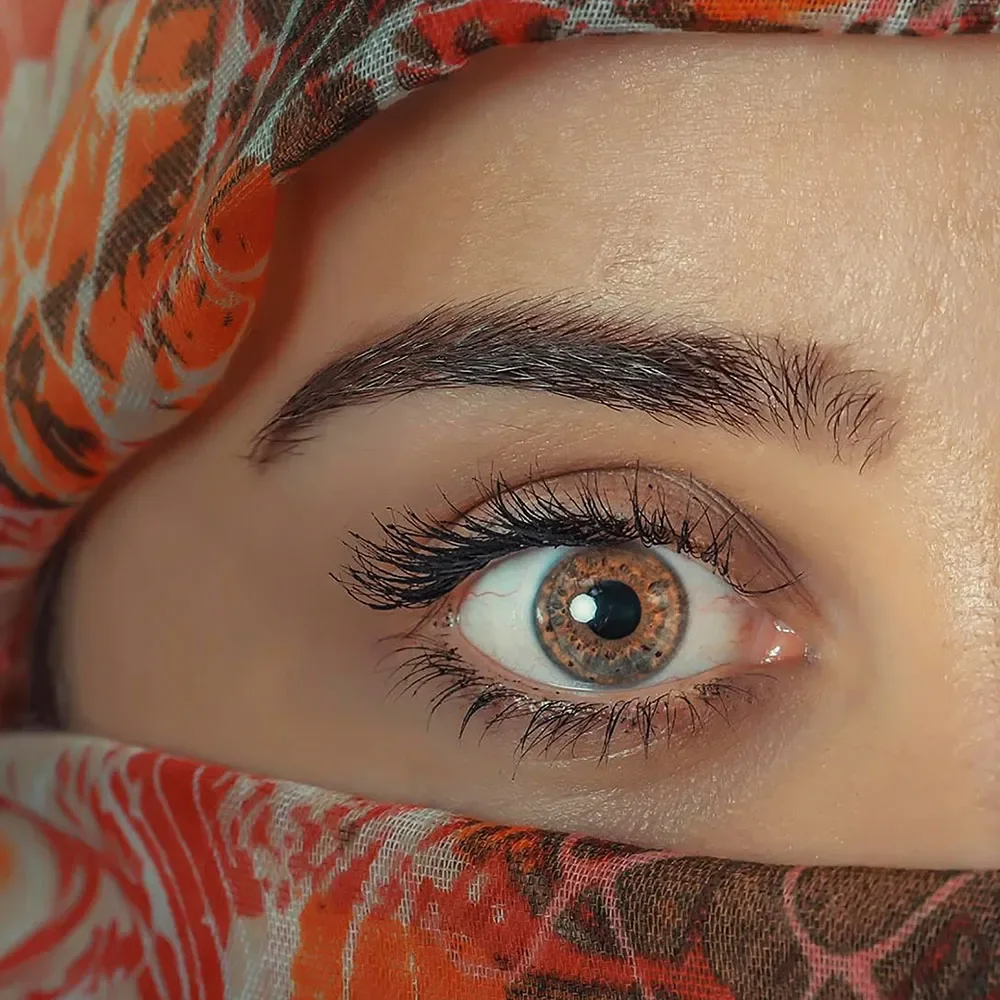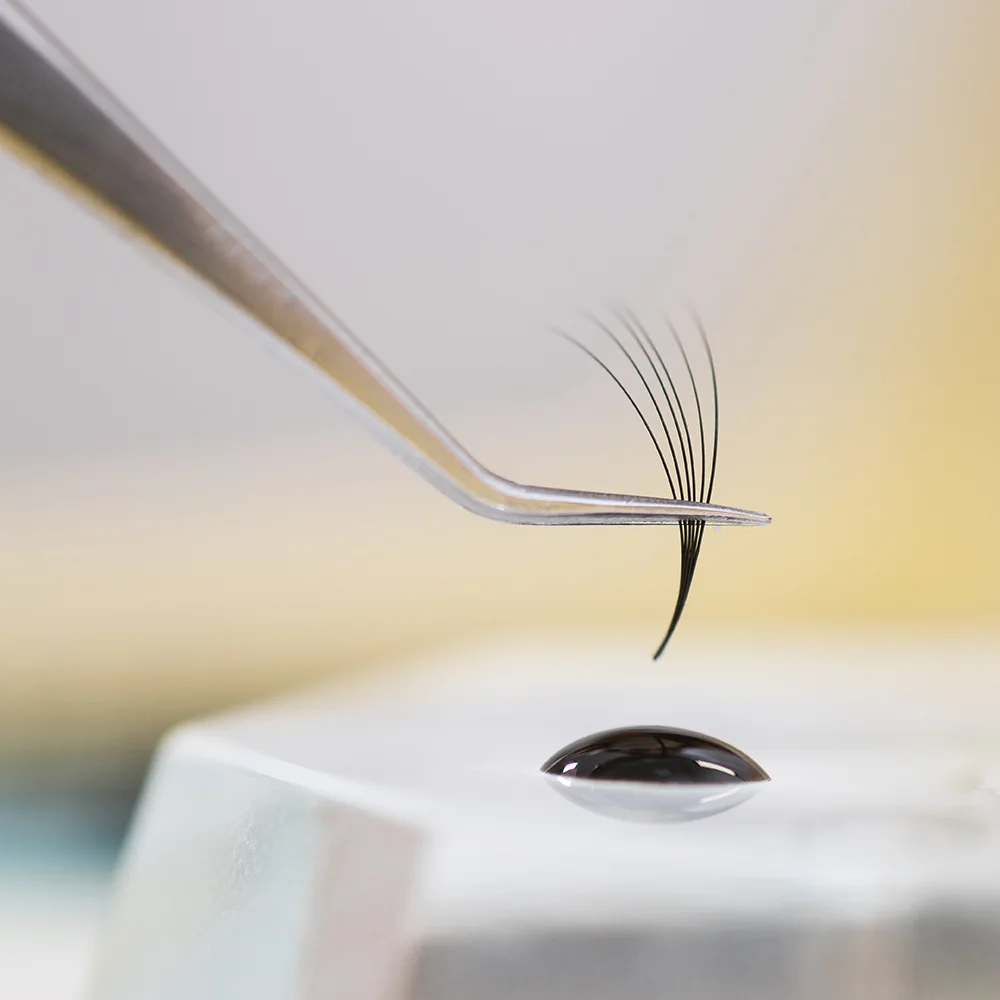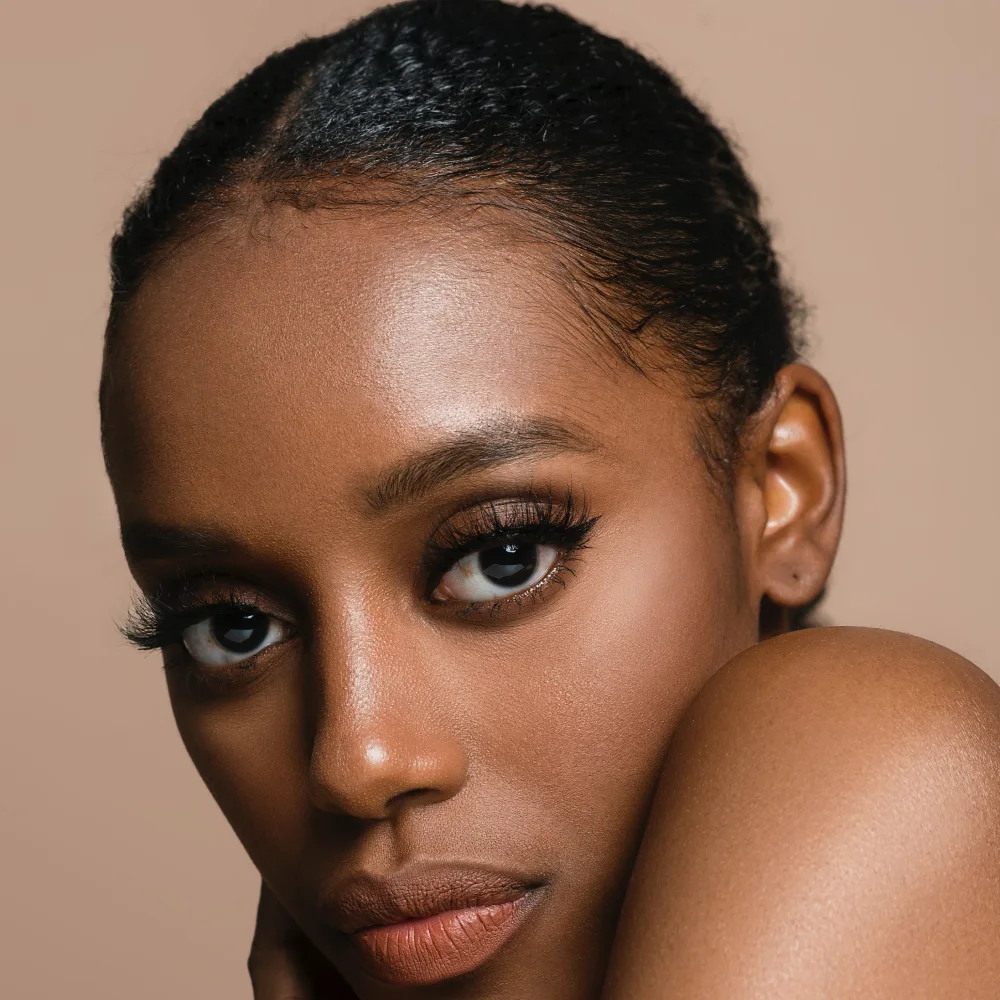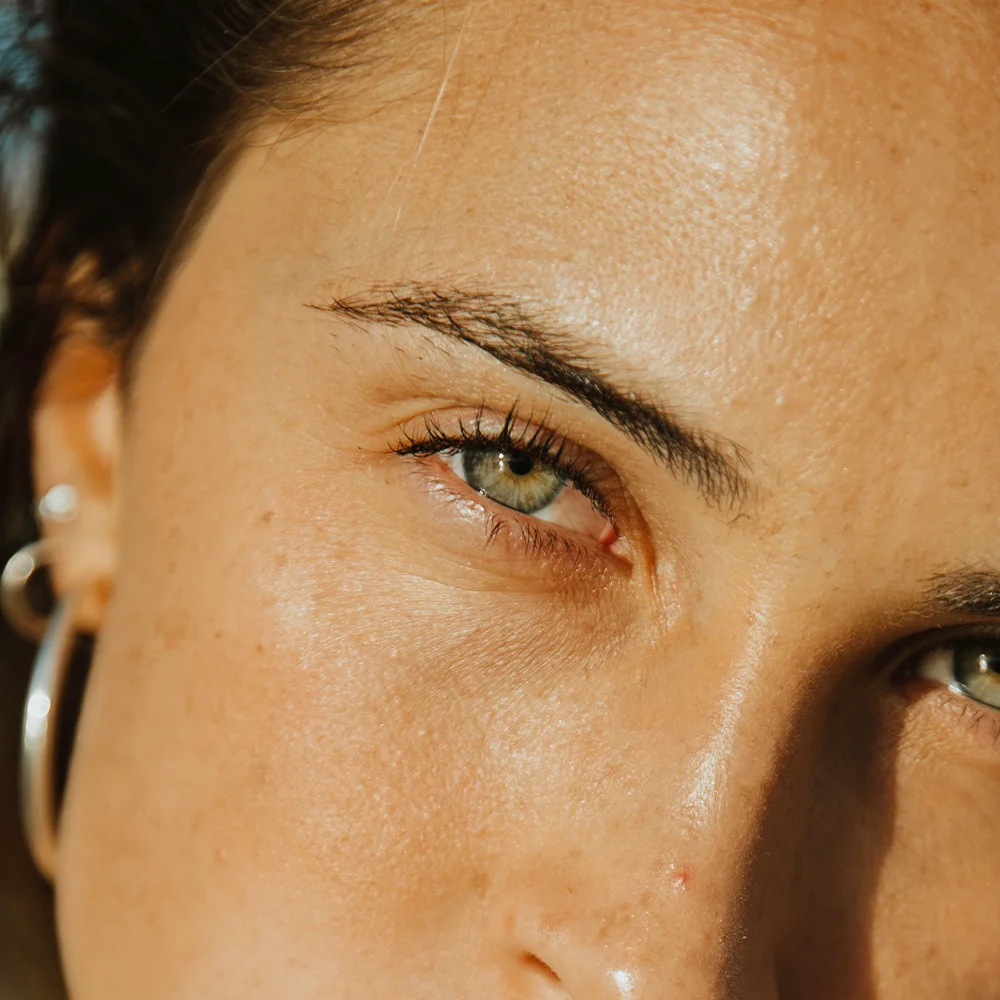Here's what we'll cover
Here's what we'll cover
Here's what we'll cover
Castor oil is most well-known as a home remedy for constipation. But there might be more to this oil than meets the eye.
Castor oil is also frequently touted for its lash-extending properties. While it likely won’t replace lash growth serums, mascara, or eyelash extensions, it might make your eyelashes appear longer or thicker. Whether it actually makes your lashes grow is up for debate.
What is castor oil?
Castor oil is a multi-purpose vegetable oil pressed from the seeds of the Ricinus communis plant.
As a natural remedy, it’s been used as a laxative, anti-inflammatory agent, skin lubricant, and hair growth stimulant. Castor oil has even been used to induce labor during the final days of pregnancy.
Even though castor oil for eyelashes has not been scientifically proven, research has found substances in castor oil (unique fatty acids) have moisturizing properties that might make eyelashes and skin appear healthier.
There’s also evidence that a component of castor oil might be able to prevent hair loss and promote hair and eyelash growth.
Does castor oil actually help eyelashes grow?
Although there is no scientific evidence that castor oil lengthens lashes, there is research showing that some substances it contains may help hair, eyelash, and eyebrow growth. That said, the science behind this isn’t very strong.
Castor oil contains what’s called ricinoleic acid, a substance that blocks the production of something called prostaglandin D2 (PG-D2, for short) in our bodies (Fong, 2015).
Research has shown that PG-D2 is present in high levels in some people who experience hair loss. This lends to the idea that castor oil might help with hair loss, but there isn’t enough proof yet for it to be a routine recommendation (Garza, 2012; Ezekwe, 2020).
Aging, sun exposure, and pollution are a few reasons hair and skin get stressed and become fragile. Castor oil contains a lot of vitamin E, an antioxidant that may help improve hair and skin health (Ananth, 2019; Beoy, 2010).
Using antioxidants on damaged human hair may decrease the breakdown of fibers and help smooth hair cuticles, resulting in improved shine (Fernandez, 2012).
It might be possible that the nourishing properties of castor oil help fight breakage of brittle hair, especially for people who’ve overused things like eye makeup, eyeliners, and waterproof mascara.
How to use castor oil on lashes
Since castor oil is relatively inexpensive compared to commercial eyelash serums, there’s likely no harm in trying it.
Castor oil is generally considered safe to use on skin and hair. It’s usually well-tolerated, but if it causes any irritation it’s a good idea to stop using it. Castor oil has even been used as an ingredient in specially formulated eye drops to treat dry eyes––though you should check with a healthcare provider before trying that (Goto, 2002).
Prices vary, but a bottle of pure castor oil for eyelashes is about $10 on Amazon and comes with little lash wands to make application easy. Many of the reviews are rave, though many customers used the product to grow their brows, not lashes. And of course, using Amazon reviews to pick your products is far from scientific.
Still, even if the only effects are a slightly glossier set of lashes, it’s hard to go wrong.
Potential benefits of castor
As mentioned previously, castor oil contains fatty acids and vitamin E, an important component in many skin and hair products. Both cosmetic and medical uses for vitamin E have positive reports in scientific literature (Keen, 2016).
Studies also suggest other plant oils (like sunflower and argan oils) that contain vitamin E can improve skin health and moisture (Lin, 2018). While there is no definitive data on castor oil specifically, it may serve as a moisturizer for both skin and hair.
Is castor oil safe to use on eyelashes and eyebrows?
Although no studies have been done on using castor oil directly on eyelashes or eyebrows, animal studies show putting castor oil on skin is safe (Jang, 2015).
Along with skin-nourishing properties, castor oil is shown to have anti-inflammatory and antioxidant properties when applied to the skin (Franke, 2019; Vieira, 2000).
When castor oil is processed or refined, all toxic elements are removed, resulting in a high-quality oil that can be safely used for medicines or beauty products. The ability of ricinoleic acid to promote hydration has made it a popular ingredient in skincare products, soaps, lipsticks, conditioners, and deodorants (Franke, 2019).
Do a patch test first
Like any other topical cosmetic, castor oil may not work for everyone. To know how your skin reacts to castor oil, a patch test is recommended.
To complete a patch test, use a cotton swab and apply castor oil to a clean, dry area of skin (preferably not on your face). Wait 24 hours to see if your skin reacts with swelling, redness, or itching. Be sure to purchase cold-pressed castor oil from a reputable seller.
How to apply castor oil to eyelashes
Using a small brush or cotton swab, apply a small amount of pure castor oil to the lash line before bed. Or using a clean mascara brush, apply castor oil directly to clean lashes nightly.
If you find that you have itchy or red eyes, flush your eyes with clear water and stop using castor oil on or around your eyes.
Castor oil for eyelashes or hair growth has not been studied thoroughly, and in the United States, the only FDA-approved use for it is as a stimulant laxative (Alookaran, 2021).
The use of castor oil appears promising as a moisturizer and hair loss inhibitor, and there are many people who use it to stop hair loss and promote lash and brow hair growth.
If you have concerns about the condition of your eyelashes or eyebrows, consult with a dermatologist as there may be medical conditions causing lash or brow loss or thinning.
DISCLAIMER
If you have any medical questions or concerns, please talk to your healthcare provider. The articles on Health Guide are underpinned by peer-reviewed research and information drawn from medical societies and governmental agencies. However, they are not a substitute for professional medical advice, diagnosis, or treatment.
References
Alookaran, J., & Tripp, J. (2021). Castor oil. In: StatPearls [Internet]. Treasure Island (FL): StatPearls Publishing. 2021, Jan. Retrieved from https://www.ncbi.nlm.nih.gov/books/NBK551626/
Ananth, D.A., Deviram, G., Mahalakshmi, V., Sivasudha, T., & Tietel, Z. (2019). Phytochemical composition and antioxidant characteristics of traditional cold pressed seed oils in South India. Biocatalysis and Agricultural Biotechnology, 17, 416-421. doi:10.1016/j.bcab.2018.12.018. Retrieved from https://www.sciencedirect.com/science/article/abs/pii/S1878818118307291
Beoy, L. A., Woei, W. J., & Hay, Y. K. (2010). Effects of tocotrienol supplementation on hair growth in human volunteers. Tropical Life Sciences Research, 21 (2), 91–99. Retrieved from https://www.ncbi.nlm.nih.gov/pmc/articles/PMC3819075/
Ezekwe, N., King, M., & Hollinger, J. C. (2020). The Use of Natural Ingredients in the Treatment of Alopecias with an Emphasis on Central Centrifugal Cicatricial Alopecia: A Systematic Review. The Journal of Clinical and Aesthetic Dermatology, 13 (8), 23–27. Retrieved from https://www.ncbi.nlm.nih.gov/pmc/articles/PMC7595365/
Fernandez, E., Martinez-Teipel, B., Armengol, R., Barba, C., & Coderch, L. Efficacy of antioxidants in human hair. Journal of Photochemistry and Photobiology, 117, 146-156. doi: 10.1016/j.jphotobiol.2012.09.009. Retrieved from https://pubmed.ncbi.nlm.nih.gov/23123594/
Fong, P., Tong, Y., Ng, K. H., Lao, C. K., Chong, C. I., & Chao, C. M. (2015). In silico prediction of prostaglandin D2 synthase inhibitors from herbal constituents for the treatment of hair loss. Journal of Ethnopharmacology, 175, 470-820. doi: 10.1016/j.jep.2015.10.005. Retrieved from https://pubmed.ncbi.nlm.nih.gov/26456343/
Franke, H., Scholl, R., & Aigner, A. (2019). Ricin and Ricinus communis in pharmacology and toxicology-from ancient use and “Papyrus Ebers” to modern perspectives and “poisonous plant of the year 2018”. Naunyn-Schmiedeberg’s Archives of Pharmacology, 392, 1181-1208. doi: 10.1007/s00210-019-01691-6. Retrieved from https://link.springer.com/article/10.1007/s00210-019-01691-6
Garza, L. A., Liu, Y., Yang, Z., Alagesan, B., Lawson, J. A., Norberg, S. M., et. al. (2012). Prostaglandin D2 inhibits hair growth and is elevated in bald scalp of men with androgenetic alopecia. Science Translational Medicine, 4 (126). doi: 10.1126/scitranslmed.3003122. Retrieved from https://www.ncbi.nlm.nih.gov/pmc/articles/PMC3319975/
Goto, E., Shimazaki, J., Monden, Y., Takano, Y., Yagi, Y., Shimmura, S., & Tsubota, K. (2002). Low-concentration homogenized castor oil eye drops for noninflamed obstructive meibomian gland dysfunction. Ophthalmology, 109 (11), 2030–2035. doi: 10.1016/s0161-6420(02)01262-9. Retrieved from https://pubmed.ncbi.nlm.nih.gov/12414410/
Jang, H. J., Shin, C. Y., & Kim, K. B. (2015) Safety evaluation of polyethylene glycol (PEG) compounds for cosmetic use. Toxicological Research, 31 (2), 105-136. doi: 10.5487/TR.2015.31.2.105. Retrieved from https://pubmed.ncbi.nlm.nih.gov/26191379/
Keen, M. A., & Hassan, I. (2016). Vitamin E in dermatology. Indian Dermatology Online Journal, 7 (4), 311–315. doi: 10.4103/2229-5178.185494. Retrieved from https://www.ncbi.nlm.nih.gov/pmc/articles/PMC4976416/
Lin, T. K., Zhong, L., & Santiago, J. L. (2018). Anti-inflammatory and skin barrier repair effects of topical application of some plant oils. International Journal of Molecular Sciences, 19 (1), 70. doi: 10.3390/ijms19010070. Retrieved from https://www.ncbi.nlm.nih.gov/pmc/articles/PMC5796020/#!po=51.3889
Patel, V. R., Dumancas, G. G., Kasi Viswanath, L. C., Maples, R., & Subong, B. J. J. (2016). Castor oil: properties, uses, and optimization of processing parameters in commercial production. Lipid Insights, 9, 1-12. doi: 10.4137/LPI.S40233. Retrieved from https://pubmed.ncbi.nlm.nih.gov/27656091/
Vieira, C., Evangelista, S., Cirillo, R., Lippi, A., Maggi, C. A., & Manzini, S. (2000). Effect of ricinoleic acid in acute and subchronic experimental models of inflammation. Mediators of Inflammation, 9 (5), 223–228. doi.10.1080/09629350020025737. Retrieved from https://pubmed.ncbi.nlm.nih.gov/11200362/










